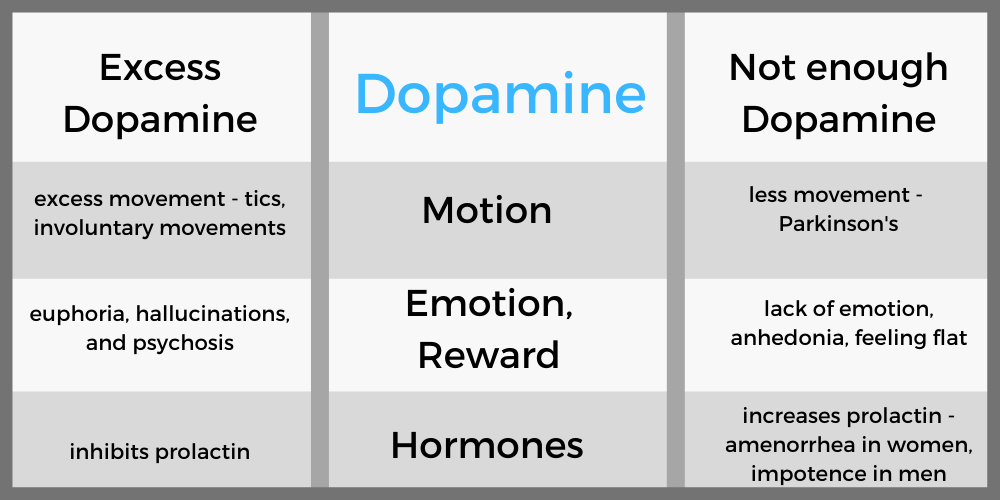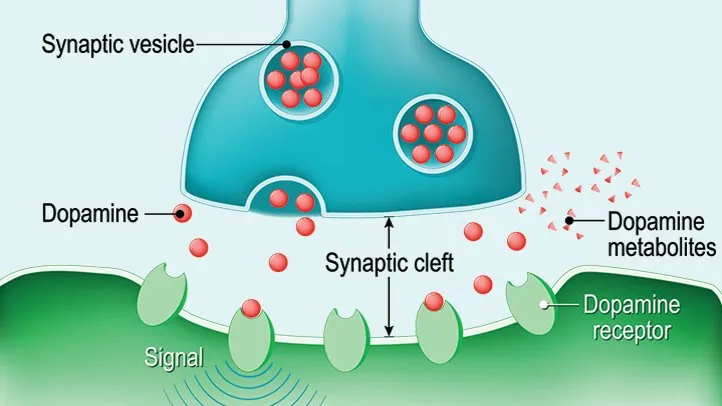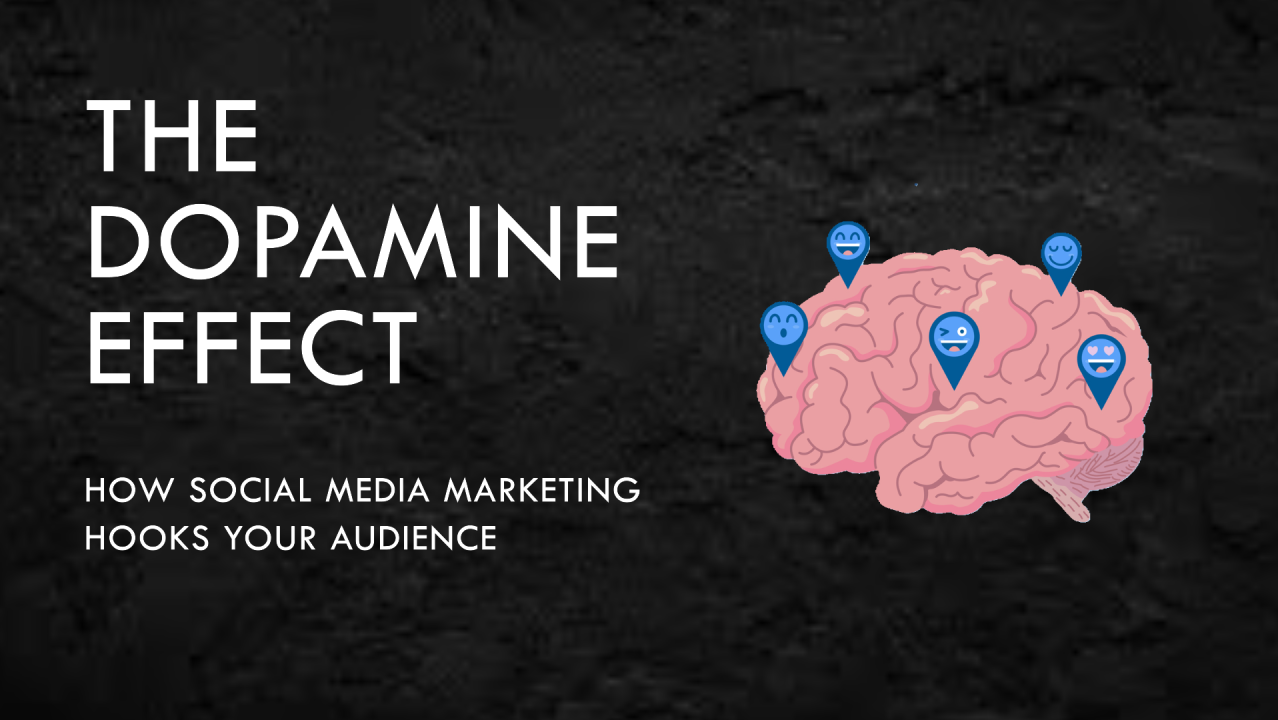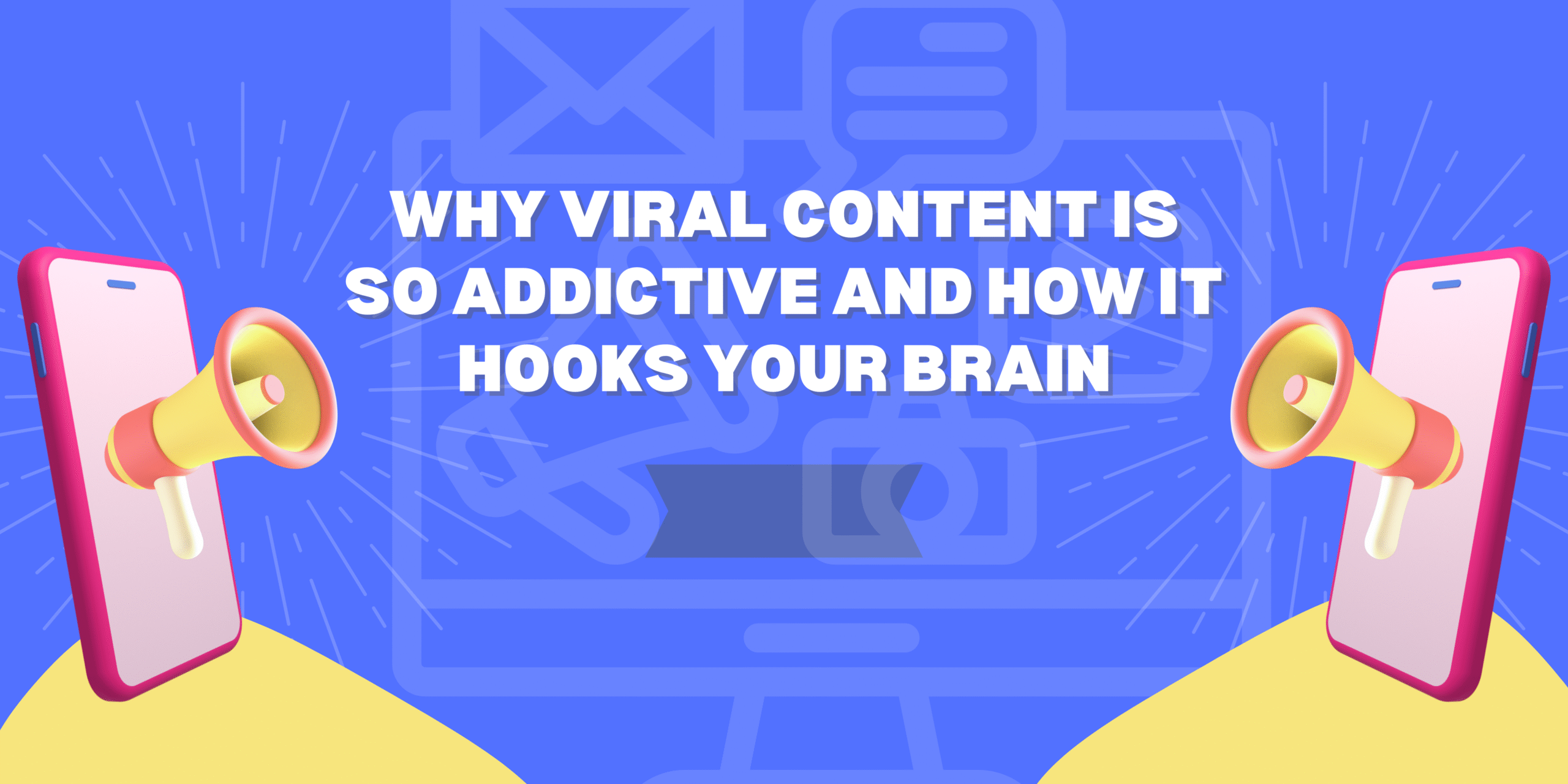he Dopamine Effect: Why Viral Content is So Addictive and How It Hooks Your Brain
Why Viral Content is So Addictive and How It Hooks Your Brain
– Have you ever wondered why you can’t stop scrolling through social media? Why certain videos, memes, or tweets make you hit “share” without a second thought? The answer lies in your brain’s chemistry. That irresistible pull isn’t just coincidence — it’s the dopamine effect in action. This neurological response explains exactly why viral content is so addictive and how it hooks your brain, keeping you engaged, entertained, and coming back for more.
In this blog, we’ll break down the psychology of viral content, how it triggers dopamine release, and why your brain gets hooked. Plus, we’ll explore how brands use this effect in content marketing and social media strategy to capture attention and boost engagement.
What Is the Dopamine Effect?
Dopamine is a powerful chemical in our brain known as a neurotransmitter, which means it helps send messages between brain cells. But dopamine isn’t just about communication — it plays a major role in how we experience pleasure, motivation, and reward. That’s why it’s often called the “feel-good” chemical.
So, what exactly does it do?
Whenever you do something enjoyable — like eating your favorite snack, laughing with friends, listening to your favorite song, or reaching a personal goal — your brain releases dopamine. This release gives you a burst of positive feeling, like a small emotional “high” or a sense of joy. It’s your brain’s way of saying, “That felt good — do it again!”
But here’s where it gets even more interesting…
Today, even small digital actions, like getting a like on your Instagram post or a comment on your video, can trigger that same dopamine release. Each notification, message, or reaction acts like a mini reward for your brain. And because it feels good, your brain starts to crave more of it.
This ongoing cycle is what we call the dopamine effect:
-
You post something online or scroll through content.
-
You get a like, comment, or share.
-
Your brain releases dopamine and makes you feel good.
-
You repeat the behavior to get that feeling again.
Over time, your brain builds a habit loop — associating certain actions (like using social media or engaging with viral content) with pleasure. This is why it’s easy to lose track of time on your phone and keep going back for more.
In Simple Words:
The dopamine effect is your brain’s way of rewarding you for things that feel good — and encouraging you to do them again. Whether it’s enjoying real-life moments or digital experiences, dopamine drives your motivation and habits, often without you even realizing it.
Why Viral Content Triggers Dopamine Have you ever watched a funny video or read a post that made you smile, laugh, or feel something strong—like happiness, surprise, or even sadness? That feeling you get is your brain releasing a chemical called dopamine.
Have you ever watched a funny video or read a post that made you smile, laugh, or feel something strong—like happiness, surprise, or even sadness? That feeling you get is your brain releasing a chemical called dopamine.
Dopamine is your brain’s way of saying, “This feels good—do it again!” So, when you come across something that’s funny, emotional, or relatable on social media, your brain gives you a small reward. It makes you feel happy or excited.
That’s why viral content—like funny reels, heartwarming stories, or shocking news—grabs your attention and keeps you coming back for more. You scroll, you laugh, you share, and then you go looking for the next post that gives you that same good feeling.
The more you enjoy it, the more your brain wants to repeat the experience. So you keep watching, liking, and refreshing, hoping to get that little dopamine “hit” again.
In simple words, viral content feels rewarding, and your brain loves rewards—so it encourages you to keep scrolling and stay online longer.
This reward loop is exactly why viral content is so addictive.
🔁Why Viral Content is So Addictive and How It Hooks Your Brain
Have you ever watched a funny video or read an interesting post—and before you even think about it, you hit ‘Share’? You’re not alone! Millions of people do the same thing every day. But why?
There’s actually science behind why we love to share things online.
When we share a post, video, or meme, it often makes us feel:
-
Smart or funny – Sharing something clever makes us look good to others
-
Connected – It helps us bond with friends or family by sharing a laugh or emotion
-
In-the-know – It shows we’re up-to-date or aware of what’s trending
Each time we share something and get likes, comments, or reactions, our brain releases dopamine, the “feel-good” chemical. This gives us a small reward, like a mental high. And just like that, your brain says, “That felt good—do it again!”
The more we share and get positive feedback, the more our brain wants to repeat the action. Over time, this can turn into a habit—or even an addiction. Some people start sharing content constantly, not just for fun, but because their brain craves that feel-good response.
So, next time you click ‘share’ without thinking, remember—it’s not just you. Your brain is wired to enjoy it!
How Brands Use the Dopamine Effect in Content Marketing
Smart brands and marketers understand a powerful truth: people love content that makes them feel something. Whether it’s joy, laughter, awe, or surprise — emotional content activates the brain’s reward system. That’s the dopamine effect in action, and brands are using it as a strategic tool to win attention, engagement, and loyalty.
Here’s how they leverage it:
1. They Create Emotionally Charged Content
Brands know that content with emotional impact performs best. Whether it’s a heartwarming story, a funny meme, or a shocking fact, emotions trigger dopamine — the chemical behind that feel-good sensation. This emotional high encourages people to engage with and remember the brand.
2. They Make Interactions Quick and Rewarding
Social platforms are designed for instant feedback — likes, comments, shares, and saves. Brands take advantage of this by creating posts that invite quick reactions. Even something as small as hitting the “like” button can spark a mini dopamine release, encouraging users to engage more often and more deeply.
3. They Use Catchy Headlines and Eye-Catching Visuals
In a fast-scrolling world, attention is everything. That’s why marketers use bold visuals, vibrant colors, and curiosity-driven headlines. These grab attention instantly and spark curiosity — another dopamine trigger that leads users to click, explore, and interact.
4. They Encourage Sharing to Multiply the Effect
Sharing content gives users a double reward: they feel good about the content and about being the one who shared it. This social validation strengthens the dopamine loop, turning casual viewers into active brand promoters.
In short, brands use the dopamine effect to make content irresistible. When audiences feel good, they’re more likely to stick around, engage often, and develop a positive emotional bond with the brand.
And that’s exactly why your small business needs social media — to build real emotional connections through fun, relatable, and feel-good content. When you tap into what makes people feel, you tap into what makes them act.
Why Viral Content is So Addictive and How It Hooks Your Brain
How It Hooks Your Brain
Here’s the full circle of how viral content captures your attention — and keeps it:
-
You encounter emotional or entertaining content.
Whether it’s a funny meme, an inspiring video, or a shocking headline, viral content grabs your attention fast. These types of content trigger an emotional reaction — surprise, laughter, awe, or even outrage. -
Your brain releases dopamine.
This emotional reaction causes your brain to release dopamine — the “feel-good” neurotransmitter. It’s the same chemical released during pleasurable experiences like eating your favorite food or receiving a compliment. -
You keep scrolling for another hit.
Once your brain gets that dopamine boost, it craves more. So you scroll again. And again. You’re not just browsing — you’re subconsciously searching for the next hit of pleasure. -
You engage and share to amplify the reward.
When you like, comment, or share, you’re not just interacting — you’re reinforcing that dopamine loop. Sharing also gives you social validation, which adds another layer of reward. -
Your brain forms a habit loop.
The more often this cycle repeats, the more your brain associates viral content with quick bursts of pleasure. Over time, this creates a habit loop where you automatically seek out similar content without even realizing it.
That’s the dopamine effect in action — a powerful, biological feedback system being skillfully used by content creators, marketers, and platforms to keep you hooked. They’re not just making content — they’re designing experiences that tap directly into your brain’s reward system.
✅ Tips to Create Dopamine-Triggered Viral Content
Want to use the dopamine effect for your own content or brand? Here’s how:
- Use emotional storytelling
- Add visual appeal with bright, moving images or video
- Keep content short, engaging, and relatable
- Include clear calls-to-action such as “Tag a friend” or “Share if you agree.”
- Test hooks and headlines to find what triggers emotion
🧩 Conclusion
The next time you find yourself endlessly scrolling or laughing at a viral meme, remember: it’s not just the content — it’s your brain chemistry at work. The dopamine effect explains why viral content is so addictive and why it keeps pulling us in.
For content creators and marketers, understanding this phenomenon opens the door to smarter content strategy that taps into what the human brain craves: reward, emotion, and connection.
Would you like this blog turned into a carousel post, infographic, or downloadable PDF for your website or Instagram?
